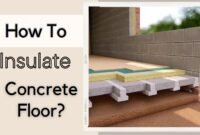Spray foam is a product that has been around for almost 30 years. Spray foam insulation has come a long way in the last ten years. As a result, it is widely available throughout the country at a low cost.
Spray foam transforms from liquid to foam in a matter of seconds, making it an ideal option for insulating the interior of your home. Spray foam is more effective in preventing air leaks than many other insulation choices, and it can easily fill cavities and seal small gaps.
Here, we will explain more about spray foam insulation and where not to use spray foam insulation.
How to Use Spray Foam
Although spray foam insulation of your home appears to be a straightforward and gratifying job, it is not. If you want to insulate a large and complex region in your home, it is recommended to hire an expert to minimize errors and keep an efficient spending budget.
You can do it in spaces like attic hatch doors, door/window frames, or sill plates. However, the steps will be slightly different.
Here’s how to use spray foam for the attic hatch door to seal the gap between the door frame and the ceiling joists to prevent air from escaping into the attic.
- Choose a day when the attic temperature isn’t too hot or cold.
- Before foaming, remove any loose insulation from the space.
- Fill up the gap between the attic hatch door frame and the ceiling joists on all four sides.
Here’s how to use spray foam to fill the gaps around the door/window frame
- Make sure the frame’s surfaces are free of dust.
- To establish an effective seal, apply foam sealant spray in a continuous bead with no voids or cracks.
- Apply waterproof foam to all four sides of the window for window applications. Only apply foam to the top and sides of doors.
Read also: Soundproofing Spray Foam For Existing Walls
The wood sill plate lies on top of the concrete foundation in many basements, creating a gap. Here’s how to use spray foam on the sill plate.
- The ceiling tile must be removed to access the sill plate and foundation in a finished basement with a dropped ceiling.
- Before foaming, cover the basement floor.
- Fill the void slowly with foam, pushing the can along the gap. For an effective seal, apply a waterproof foam spray in one continuous bead with no voids or cracks.
Generally, these steps are similar to other applications, just make sure you do it in a more balanced temperature and only fill a small amount first because it will spread to a bigger and wider area.

Where not to use Spray Foam Insulation
Spray foam, particularly open-celled or closed-cell spray foam, is not advised for adding insulation between the back of an electrical box and the outside wall. The parts will become stuck if you put expanding foam inside the box, especially those with high expansion rates.
Furthermore, you are exposing combustible materials to your electrical box. Make careful to use low-expanding spray foam insulation in this area if you do decide to use it, as types of spray foam with lower expansion rates reduce the risk of damage.
Spray foam, especially open cell spray foam, should never be used to insulate around recessed ceiling canister lights. You can trap heat and raise the fire risk if you spray too close to the top of ceiling light boxes. Allowing these areas to open and close freely is important to maintain proper air quality.
Even if your recessed canister lights are rated for close contact with insulation, you might want to talk to a consultant about other options.
Read also: Is Spray Foam Insulation Flammable?
Can Spray Foam be Used Outside?
Spray foam insulation can be used in exterior walls. Spray foam insulation is a common method of keeping homes warm during the coldest months. Spray foam is well-known for its ease of installation on various exterior wall surfaces.
After knowing where not to use spray foam insulation, you can decide whether to use it as your house insulation or not. With such a high budget, is spray foam insulation worth it? It all boils down to your priorities.
When considering spray foam insulation, it’s crucial to understand its limitations. For instance, applying spray foam directly onto a roof deck can sometimes lead to moisture issues, as the material can create a seal that traps moisture.
It’s recommended to wait 24 hours after application before assessing the area to ensure proper curing and to avoid any negative impact on air quality.
If you can see the value in properly insulating your new construction home from the start in terms of energy savings month after month and long-term comfort, then spray foam insulation may be well worth the extra expense.


